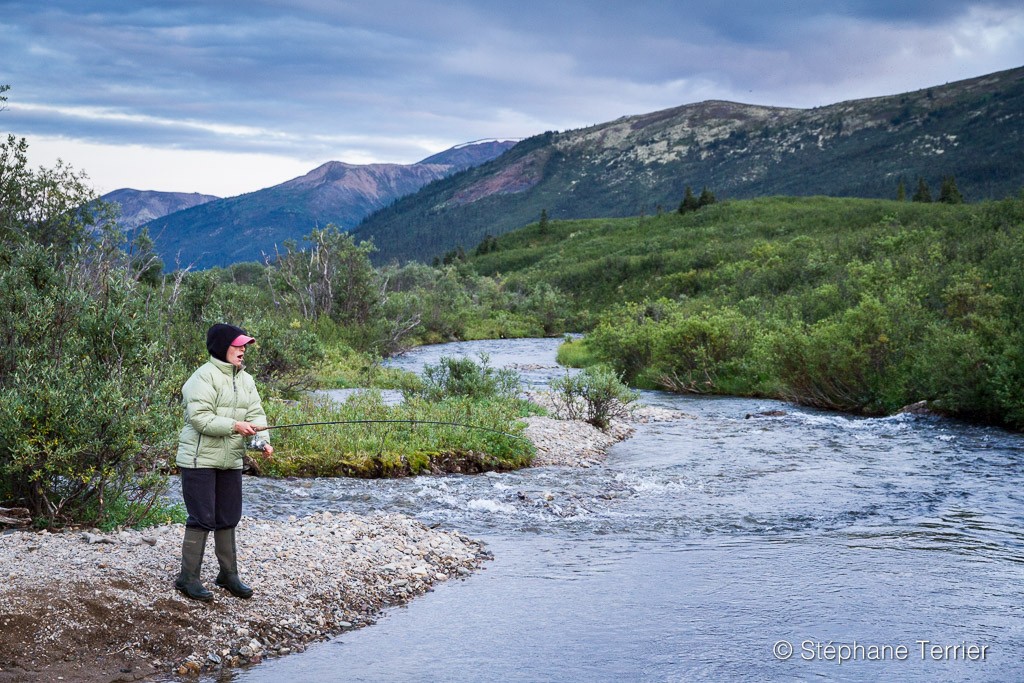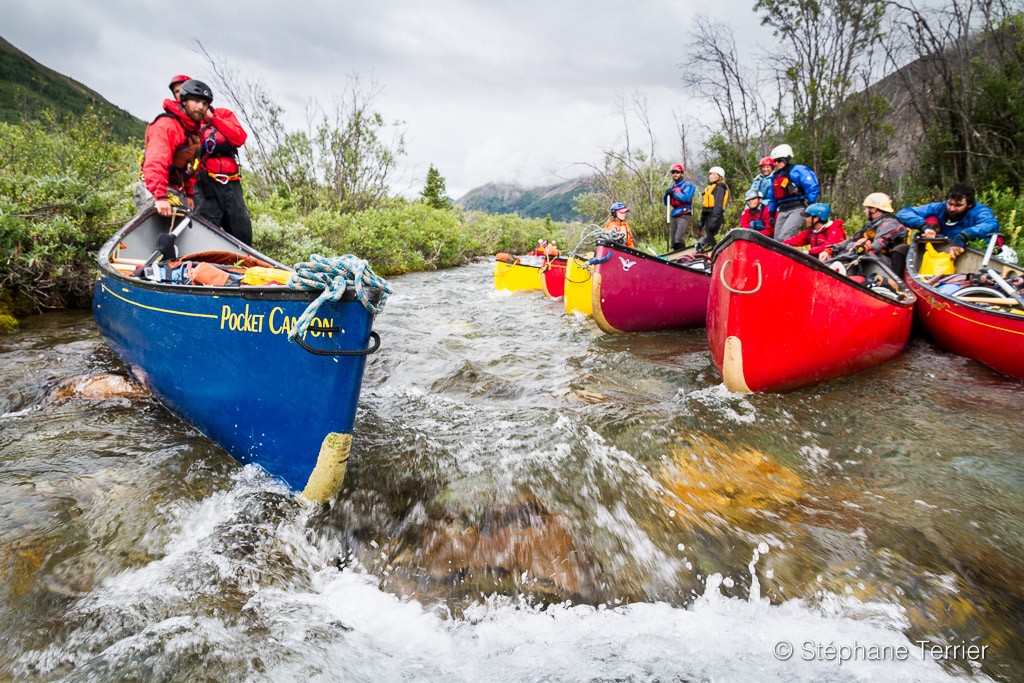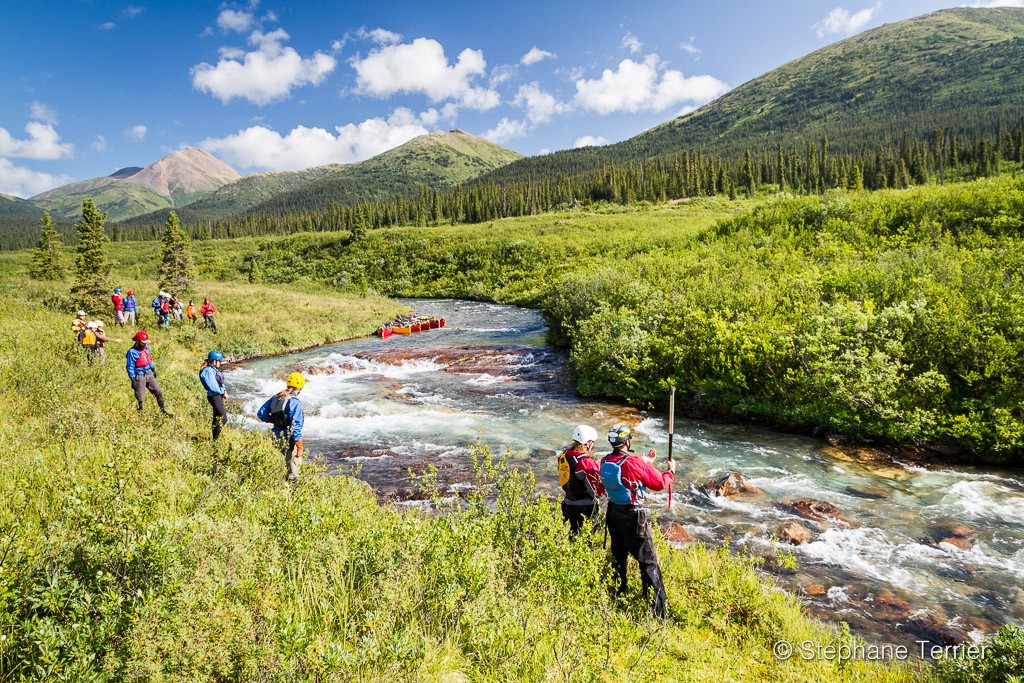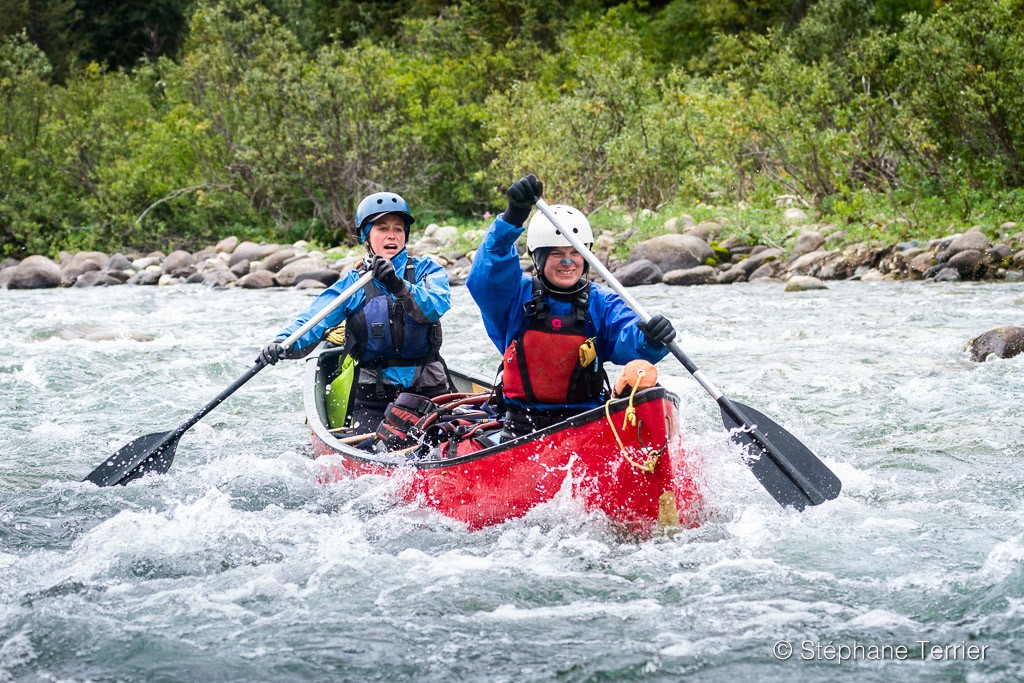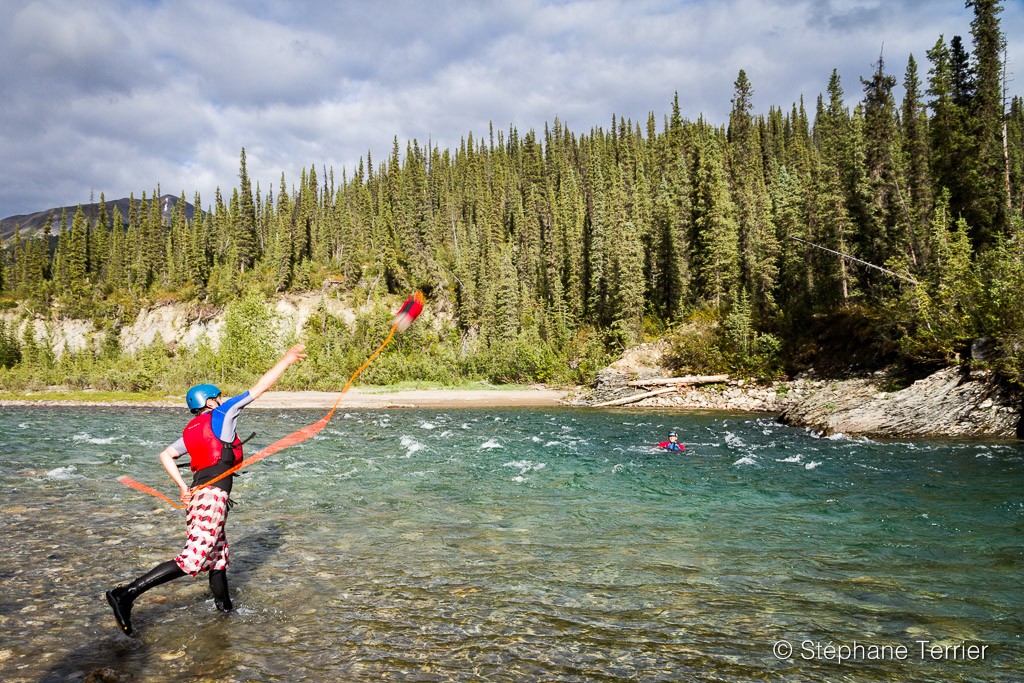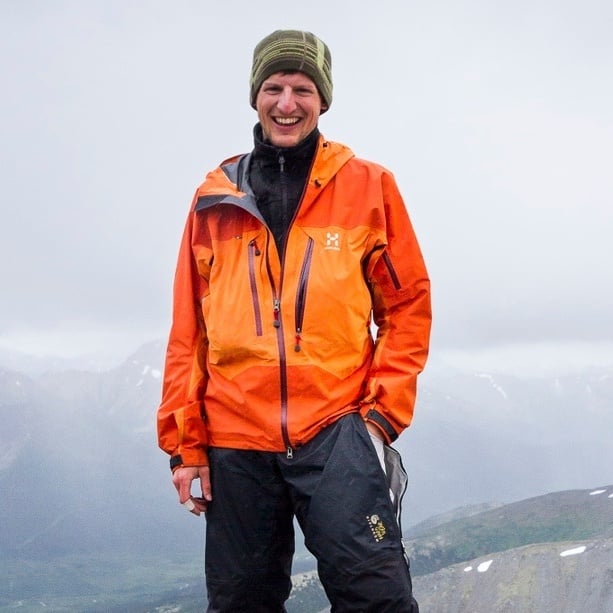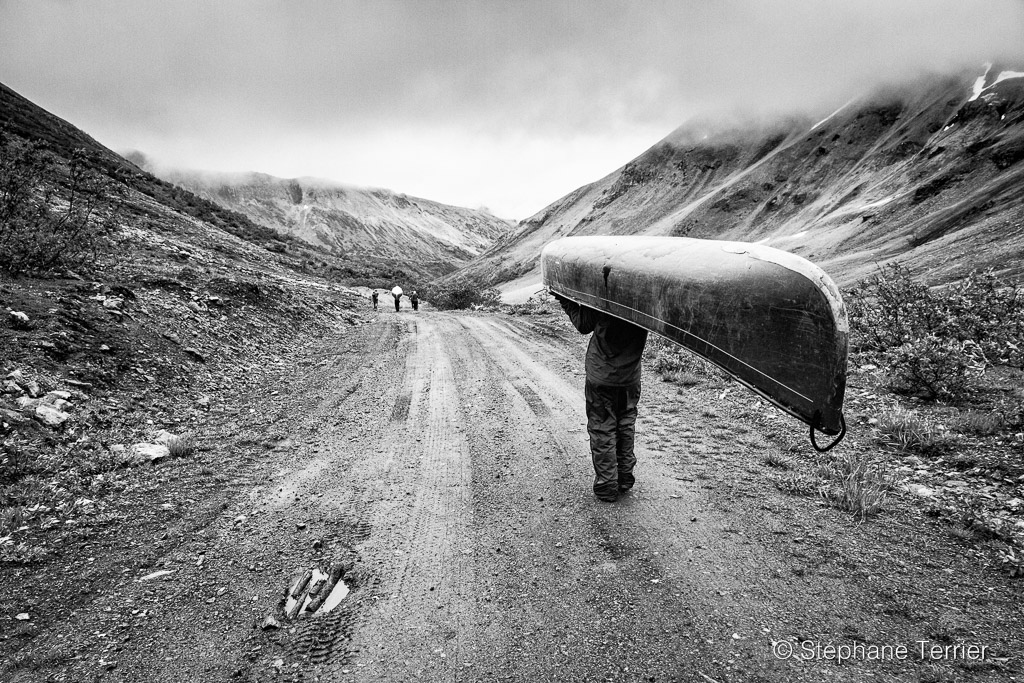Editor's note: After his first NOLS experience, engineering PhD candidate Stéphane Terrier of Lausanne, Switzerland, was eager to go back into the field for more. Stéphane had already built a relationship with our design department thanks to the stunning photos he submitted after his first course, so we were thrilled to hear he had enrolled on a Yukon Outdoor Educator course.
Once again, Stéphane pulled out his camera to document the fifteen-day hiking section in the Pelly Mountains and the thirteen-day paddling section, on which he and his group travelled through Class III rapids on Seagull Creek, McConnell River and Nisutlin River in canoes, covering roughly 155 kilometers.
Enjoy Stéphane’s photos and commentary on the course—you're in for a treat.
After a layover day where we practiced canoeing strokes on the headwater lake of Seagull Creek, the evening was dedicated to learning fly fishing for those who wanted. We caught multiple fish and we had a second dinner shortly before midnight. Talia here is fishing at the transition between the headwater lake and Seagull Creek, where we started paddling the next day.
Seagull Creek is a small stream at its source, and before starting I couldn’t imagine using 5.2 meter (17 feet) long canoes in a narrow and shallow creek like this. It was possible, although we often had to get out of the canoes in shallow parts. The canoes bumped the banks a few times, sometimes because the paddler mixed up the strokes used for turning…
This is the biggest rapid on Seagull Creek (Class III). It starts with the ledge visible in the middle of the photo and continues with 200-300 meters of boulder field before reaching two additional ledges. We got out of the canoes to scout it. After discussing lines with our paddling partners and as a whole group, we decided to walk our canoes through it.
There were many whitewater sections on the three rivers we paddled. Depending on what we saw from our canoes, we either ran rapids on sight or we had to scout. Usually after a scout, we either decided to line the canoes or run the rapid in our canoes one by one, with an instructor going first and another positioned in the middle of the rapid for safety.
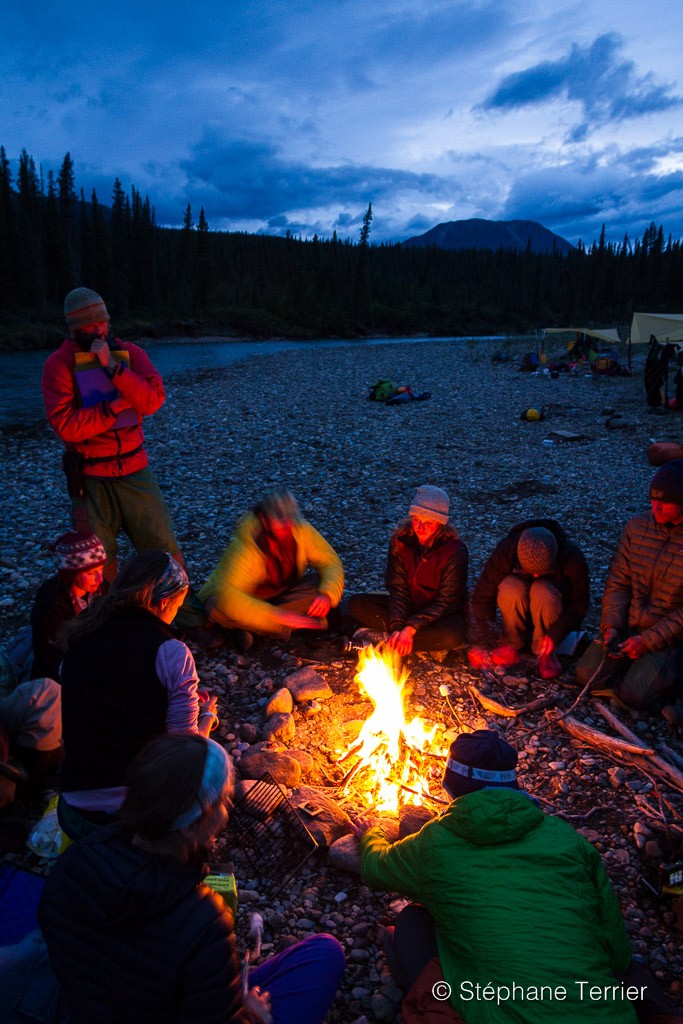
After spending six days on Seagull Creek, this was our first camp on the McConnell River. The instructors asked us to make a fire after the evening class in order to… surprise us with s’mores! As a European, I had never heard of s’mores before and my coursemates had to show me how to make them! Final verdict? Chocolate is better on its own.
The next day, we woke up and got out of the tents under a beautiful rainbow. It was short-lived, as a few minutes later during breakfast preparation a downpour hit us. The rain didn’t last long, however, and it soon cleared to this strong double rainbow.
We took advantage of a warm and sunny afternoon to camp early and do some river rescue practice. We trained throwing and catching ropes as well as how to swim safely.
The most technical part of the canoeing section was the Nisutlin Canyon. It is a series of continuous Class III rapids for five kilometers (three miles). We had to scout most of them and, as illustrated here with the first major rapid, line some of them. The river is flowing towards the southwest in the canyon, so sun reflections make it very difficult to distinguish obstacles. This is exacerbated by being close to the water level while in the canoe. In the photo the obstacles are easily visible, as the camera is pointed upstream towards the northeast and a polarizing filter was used on the lens.
 Photo by Stéphane Terrier
Photo by Stéphane TerrierAfter two days of rapids on the Nisutlin River, the gradient rapidly decreased. We were left with 65 kilometers (40 miles) of paddling on flat water until our extraction point in the afternoon the next day.
Find Part 1 of this story here.
See Stephane's course, YukonOutdoor Educator
Editor's note: Written in collaboration with Alex Phillips. Post updated 10/17/2017
Written By
Stéphane Terrier
Stéphane Terrier is a four-time NOLS alumni from Switzerland, having taken his courses in Alaska and the Yukon. He recently finished a PhD at the Swiss Federal Institute of Technology in Lausanne (EPFL) and is now working as a civil engineer. During his free time, he seeks adventure while hiking, climbing and skiing in the Alps. An avid photographer, many of Stéphane’s course photos have been published in NOLS publications. Follow his adventures on Instagram, @stephaneterrier and his website, sterrier.com.

